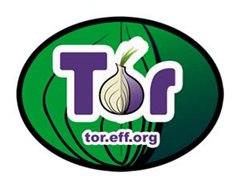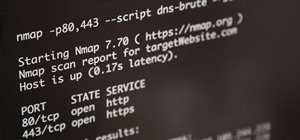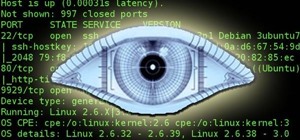Introduction
 The 3 major anonymity networks on the Internet are Tor/Onionland, I2P and Freenet. If you feel confused on which one is the "best" one to use the answer is simple. Use all three!
The 3 major anonymity networks on the Internet are Tor/Onionland, I2P and Freenet. If you feel confused on which one is the "best" one to use the answer is simple. Use all three!
Each anonymity network is designed for a different specific purpose. One network alone cannot do what the three can do together. Tor and I2P cannot persist information like Freenet can, Tor and Freenet can't offer the generic transports that I2P provides and Freenet doesn't handle data streaming as well as Tor and I2P. There is also no better proxy system than the Tor network.
Tor/Onionland
 Tor is an anonymous Internet proxy. You proxy through multiple Tor relays and eventually pass through a Tor exit relay that allows traffic to exit out of Tor and into the Internet. Tor has the most attention and the most support. The user base on the Tor network is on average 100,000 to 200,000 users in size which is the largest of the three. Tor also provides an anonymous intranet often referred to as onionland.
Tor is an anonymous Internet proxy. You proxy through multiple Tor relays and eventually pass through a Tor exit relay that allows traffic to exit out of Tor and into the Internet. Tor has the most attention and the most support. The user base on the Tor network is on average 100,000 to 200,000 users in size which is the largest of the three. Tor also provides an anonymous intranet often referred to as onionland.
Onionland uses the same method to connect to machine identified by a cryptographic public key. This way you cannot easily determine the machines IP address.
Positive Parts of Tor/Onionland:
- Written In C, that means that it is fast and generally low memory usage.
- Very easy and simple user interface. Vidalia, the Tor control software is simple point and click.
- Most sophisticated and robust system for proxying currently devised.
Negative Parts of Tor/Onionland:
- Written in C. The source code tree of any project written in C is always huge and hard to figure out what is going on. C is a low level compiled systems language. More effort is needed to prevent memory leaks, buffer overflows and compatibility with different architectures and operating systems. There is no such thing as a small C program, with C there is always a lot more lines.
- Limited Functionality. Even including the hidden services functionality, Tor still doesn't do very much besides act as an anonymous proxy.
- The network is very crowded. The Core infrastructure of Tor is 2,500 to 3,000 machines routing traffic and has 100,000 to 200,000 users every day. Onionland has less anonymity vs I2P. With Tor you are targeting at most 3,000 machines. I2P as of March 2012 has an estimated 4 times the number of machines routing information. Depending on the day, I2P has an estimated 9,000 to 14,000 active machines. Even though 14,000 is the entirety of I2P, you still need to deal with more than 4 times more machines vs Onionland when doing attacks.
- Connections with Tor aren't dynamic like I2P tunnels are, Tor circuits persist until closed. This can reduce anonymity.
- No support for UDP
The best use for Tor is anonymous proxying to the regular Internet.
FreeNet
 Freenet is an anonymous data publishing Network and is very different from Tor and I2P. Freenet is much higher latency and focuses more on friend to friend interactions with often military grade security. To play off of an old Internet meme...
Freenet is an anonymous data publishing Network and is very different from Tor and I2P. Freenet is much higher latency and focuses more on friend to friend interactions with often military grade security. To play off of an old Internet meme...
Freenet is a big truck you dump stuff on while I2P is a series of Tubes.
Freenet uses UDP and is the "oldest" of the 3 Networks. It is hard to gauge the size of Freenet because of its ability to connect exclusively to friends and not strangers. It's estimated to have about 20,000 active machines but may have more.
Positive Parts of FreeNet:
- Superior Friend To Friend Sharing vs I2P.
- The "most secure" of all the 3 networks for publishing content anonymously.
- Easy Setup.
Negative Parts of Freenet:
- Slow, and VERY resource intensive. Written In Java.
- Requires the user sacrifice not just bandwidth but also room on your hard drive.
- Freenet is a tool for bypassing totalitarian censorship where people would be killed for publishing certain content. Because of that, it's NOT for casual browsing.
The best use is publishing content anonymously.
I2P (Invisible Internet Project)
 I2P is a Distributed Peer to Peer Anonymous Network Layer. It allows you to send data between computers running I2P anonymously with multilayer end to end encryption. I2P derived from IIP (Invisible IRC Project) which was one of FreeNet's sister projects. I2P focuses on exclusively internal communication and not proxying to the regular Internet. I2P uses garlic routing which involves clumping packets together into bigger packets. The combination of garlic routing, multilayer encryption and random padding on packets makes analysis of the content and detection of the origin of I2P traffic highly impractical if not nearly impossible. I2P currently has 9,000 to 14,000 active machines depending on the time of day. Most of the nodes are either European or Russian.
I2P is a Distributed Peer to Peer Anonymous Network Layer. It allows you to send data between computers running I2P anonymously with multilayer end to end encryption. I2P derived from IIP (Invisible IRC Project) which was one of FreeNet's sister projects. I2P focuses on exclusively internal communication and not proxying to the regular Internet. I2P uses garlic routing which involves clumping packets together into bigger packets. The combination of garlic routing, multilayer encryption and random padding on packets makes analysis of the content and detection of the origin of I2P traffic highly impractical if not nearly impossible. I2P currently has 9,000 to 14,000 active machines depending on the time of day. Most of the nodes are either European or Russian.
Positive Parts of I2P:
- Can do everything the regular Internet can do. Torrents, HTTP, or any other TCP or UDP based protocol. User Defined Transport Layer protocols could be used as well if you know some Java.
- Well Documented API for building applications that use I2P
- Diverse, Interesting and knowledgeable community.
Negative Parts of I2P:
- New users have to wait to get faster speeds and it is still not as fast as Tor can be
- Resource Intensive, not as bad as FreeNet but still not as good as Tor. Written in Java.
- Experimental software, still being actively developed and is considered beta software.
- Needs academic criticism on the level that tor has received.
- The user reception is not yet as noob friendly like Tor.
The best use for I2P is for peer to peer file sharing and a replacement for the regular Internet in the event that it gets bad enough to warrant such action
The Phantom Protocol
From what I can gather, the phantom protocol is just that, a phantom. After long periods of time very little progress was made on its development. It seems like vaporware to me and I have very little to say about it.
Conclusion
There is no one Anonymity Network that "does everything". To have effective anonymity you must learn more than just one tool. Even if you learn how to use the 3 networks properly there is still a lot more to learn. Each network has its different usages. There are even more tools that can be used with these networks to provide even more functionality that go beyond this brief overview. Such including advanced ssh tunneling and configuration, personal VPNs and many command line tools that when used together can do more than most average users can with GUI based tools. Anonymity networks right now are the akin to the Internet in the early 1990s, a "relm of hackers" wanting to create a better tomorrow.
Happy hacking.
Just updated your iPhone? You'll find new emoji, enhanced security, podcast transcripts, Apple Cash virtual numbers, and other useful features. There are even new additions hidden within Safari. Find out what's new and changed on your iPhone with the iOS 17.4 update.


























1 Comment
Actually a very nice article ,keep up the good work sir .
Regards
Jacky
Share Your Thoughts